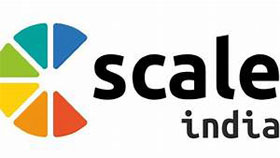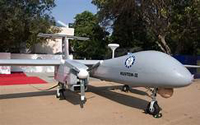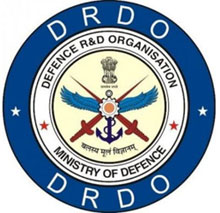October 2020 Science and Technology
Sakshi Education

- Bharat Biotech’s Covaxin gets nod for phase 3 clinical trials
India's indigenous COVID-19 vaccine, COVAXIN, developed by Bharat Biotech in collaboration with the Indian Council of Medical Research (ICMR) has received the nod for Phase-3 clinical trials.
The Subject Expert Committee which functions under the drug regulator Drug Controller General of India (DCGI) has given approval for the last phase of clinical trials with certain conditions.
In the Third Phase of trials, which is proposed to begin in the first week of next month, the potential vaccine candidate will be tested on over 28 thousand people aged 18 years and above.
These tests will be conducted across 10 states and 19 sites including Delhi, Mumbai, Patna and Lucknow among others.
Besides, Bharat Biotech's COVAXIN, another indigenously developed vaccine candidate by Zydus Cadila Limited is also in Phase -2 of human clinical trials.
Covaxin
The country’s first indigenous vaccine is an inactivated one created from the strain of the infectious SARS-CoV-2 virus.
Inactivated vaccines use the killed version of the germ that causes a disease. It helps the immune system mount an antibody response towards the virus.
The vaccine was developed along with ICMR- National Institute of Virology
- IMD commissions Flash Flood Guidance Services for South Asia
A dedicated FFGS centre will be established in New Delhi, where weather modelling and analysis of rainfall data observations from member countries will be done.
Guidance for flash floods in form of Threats (6 hours in advance) and Risks (24 hours in advance) will be provided for taking necessary mitigation measures to reduce the loss of life and property in India, Bangladesh, Bhutan, Nepal and Sri Lanka.
Flash Floods are highly localized events of short duration with a very high peak and usually have less than six hours between the occurrence of the rainfall and peak flood.
It causes high damages because of suddenness and according to World Meteorological Organization (WMO) about 5,000 people die annually due to flash floods.
It occurs in hilly and not too hilly regions and sloping lands where heavy rainfall and thunderstorms or cloudbursts are common.
Other reasons include sudden release of waters from upstream reservoirs, breaches in landslide dams etc.
- CSIR-CMERI develops Sustainable Municipal Solid Waste Processing Facility
The Council of Scientific and Industrial Research’s Central Mechanical Engineering Research Institute (CSIR-CMERI) has developed a Municipal Solid Waste (MSW) Processing Facility (Decentralised Solid Waste Management Plant) to solve the problem of waste management in India.
With an ever-increasing population and rapid pace of urbanisation, India faces a huge challenge of waste management.
The volume of waste is projected to rise from the present 62 million tonnes to about 150 million tonnes by 2030.
Indiscriminate dumping of garbage at the current rate without appropriate scientific treatment would impose a huge requirement of landfill area per year.
Studies suggest that the MSW generated in India mostly consists of a large fraction of organic wastes and their unscientific disposal produces greenhouse gas (GHG) emissions and other air pollutants like methane (CH4).
The ineffective processing of MSW also is the root cause of many diseases as the dumped landfills transform into contamination hubs for pathogens, bacteria and viruses.
The most commonly used process "composting" also does not yield impactful economic returns for the entrepreneurs.
- AIM Launches I-ACE, with Australia’s CSIRO
AIM (Atal Innovation Mission), in association with Australia’s Commonwealth Scientific and Industrial Research Organisation (CSIRO), is organizing a two-day hackathon on the circular economy, ‘India–Australia Circular Economy Hackathon (I-ACE)’, on 7 and 8 December.
The four key themes for the hackathon are as follows:
Innovation in packaging reducing packaging waste
Innovation in food supply chains avoiding waste
Creating opportunities for plastic waste reduction
Recycling critical energy metals and e-waste
The idea of the hackathon (I-ACE) was conceived during a virtual summit on 4 June, between the Indian and Australian prime ministers, exploring innovative ways to boost the circular economy in India & Australia.
Hackathon will focus on identification and development of innovative technology solutions by bright-minded students, startups and MSMEs of both nations.
Shortlisted startups/MSMEs and students will be called for the hackathon (I - ACE), where two winners per theme from each country will be announced at an award ceremony on 11 December.
India and Australia have had a strong and productive bilateral partnership since a decade and our collaborations across a broad range of areas have yielded significant results. Australia and India can align research and developmental efforts to achieve more at a challenging time in the history of mankind.
The winning startup/MSME and Indian student teams will be awarded with a prize of Rs 5 lakh and Rs 2 lakh, respectively, coupled with post-hackathon product development opportunities. The winning student of Australia will be awarded a prize of AUD$3500 and the winning Australian SMEs/startup team a prize of AUD$9500.
- Indian genomes provide a compendium of genetic variants representing the contemporary Indian population
Results from the extensive computation analysis of the 1029 sequenced genomes from India carried out by CSIR constituent labs, CSIR-Institute of Genomics and Integrative Biology (IGIB), Delhi and CSIR-Centre for Cellular and Molecular Biology (CCMB), Hyderabad were published in the scientific journal, Nucleic Acid Research, earlier this week.
The allele frequencies of the genetic variants generated in the study are available on the IndiGenomesdatabase accessible at http://clingen.igib.res.in/indigen.
The analysis led to the identification of 55,898,122 single nucleotide variants in the India genome dataset.
Comparisons with the global genome datasets revealed that 18,016,257 (32.23%) variants were unique and found only in the samples sequenced from India. This emphasizes the need for an India centric population genomic initiative.
India is the 2nd largest country in terms of population density with more than 1.3 billion individuals. In spite of having this rich genetic diversity, India has been under-represented in global genome studies.
CSIR started the IndiGen Program in April 2019. Under this, the whole genome sequencing of 1029 self-declared healthy Indians drawn from across the country has been completed.
The current IndiGenomes data provides a compendium of genetic variants representing the contemporary Indian population with an objective to classify variants involved in Mendelian disorders & improve precision medicine outcomes.
The resource is accessible to the researchers and clinicians in India and abroad. There have been over 200,000 pageviews on the IndiGenomes web page from users spanning 27 countries.
- ISRO to launch earth observation satellite EOS-01 on November 7
This is the first launch by the Indian Space Research Organisation (ISRO) since the COVID-19 induced lockdown came into force in March.
India would launch its latest earth observation satellite EOS-01 and nine international customer spacecraft onboard its Polar rocket PSLV-C49 from the spaceport of Sriharikota in Andhra Pradesh on November 7.
ISRO Chairman K Sivan had said in June that ten space missions being prepared for launch this year have been 'disturbed' due to the lockdown.
EOS-01 is intended for applications in agriculture, forestry&disaster management support.
The launch is tentatively scheduled at 3.02 pm on November 7 subject to weather conditions from the Satish Dhawan Space Centre at Sriharikota.
The customer satellites are being launched under a commercial agreement with NewSpace India Limited (NSIL), Department of Space.
This will be the 51st mission of ISRO's workhorse Polar Satellite Launch Vehicle.
Given the strict COVID-19 pandemic norms in place at the launch centre, a gathering of media personnel there was not planned, and the viewing gallery will be closed.
However, the live telecast of the launch will be available on the ISRO website, Youtube, Facebook and Twitter channel.
In June, Sivan highlighted that ISRO would assess the impact of the lockdown on its missions.
Because of this (pandemic), everything got disturbed. We have to assess after the COVID-19 issue is resolved.
- SCALE India Android App launched by LSSC
 Leather Sector Skill Council launches SCALE India Android App for Enhanced Quality Assurance under Skill India Mission. Leather Sector Skill Council (LSSC) today announced the launch of Skill Certification Assessment for Leather Employees (SCALE) India android app on October 15, 2020.
Leather Sector Skill Council launches SCALE India Android App for Enhanced Quality Assurance under Skill India Mission. Leather Sector Skill Council (LSSC) today announced the launch of Skill Certification Assessment for Leather Employees (SCALE) India android app on October 15, 2020.
Aim:
The SCALE platform assists employees to upgrade their skills basis changing market dynamics. The aim is to meet the evolving industry demands and get certified on the new skills acquired. It brings candidate/trainee, employer, employee, assessor and trainer – all at one place.
Highlights:
SCALE app virtually works on any smart handheld device, desktop/laptop, smart phones, tablets etc.
The app will also helps in engaging employers with other stakeholders and also provide a marketplace for human capital for the leather industry.
The assessments are currently available in English, Hindi, Tamil, and Bengali, with plans to add more regional languages in a phased manner.
This app will help candidates in the skilling ecosystem to get assessed and certified on their knowledge, skills and behaviour on a specific qualification pack.
SCALE App provides access to micro learning modules for the betterment of the knowledge.
Leather Sector Skill Council (LSSC):
LSSC set up in year 2012 by the approval of National Skill Development Corporation (NSDC) is a non-profit organisation dedicated to meet the demand for skilled workforce in the leather industry in India.
- BepiColombo Spacecraft crossed Venus
The BepiColomboSpaceCraft has crossed the Venus in its journey towards Mercury.
Highlights:
BepiColombo is a joint mission of the Japan Aerospace Exploration Agency (JAXA) and the European Space Agency (ESA) to the smallest planet Mercury.
The mission comprises two satellites launched together: The Mercury Planetary Orbiter (MPO) and Mercury Magnetospheric Orbiter, MMO(MIO)
This mission will perform a comprehensive study of Mercury, including characterisation of its magnetic field, magnetosphere, and both interior and surface structure.
The Spacecraft was launched on an Ariane 5 rocket on 20 October 2018 and it will arrival Mercury in December 2025.
The Spacecraft is one of the European Space Agency's Horizon 2000+ programmes.
This is the last mission of the programme to be launched.
- Science-Society-Setu webinar series initiated to strengthen the S&T capacity of NGOs & Communities
The need to create knowledge that is required for different sections of our society at the Science-Society-Setu for AatmaNirbhar Bharat (S34ANB), a web clinic series by Science for Equity Empowerment and Development SEED Division, Department of Science and Technology (DST).
Highlights:
DST has organised the discussions under web clinic to reach the unreached through 'vocal for local approach' to strengthen the social infrastructure & technology-driven pillars of 'Aatmanirbhar Bharat.'
The web clinic is in partnership with the Office of Principal Scientific Advisor, India Science Technology & Innovation Portal, WWF-India, AGNi, HESCO & FICCI.
The webinar will cover four broad sectors, namely: 'agriculture and allied sectors, MSME & economic sector, social infrastructure, and cross-sectoral areas’.
To have a free flow of knowledge, have the last mile connects besides creating new small business opportunities, social entrepreneurship, and empowering the self-help groups.
The knowledge ecosystem consists of two categories: knowledge creation and transforming knowledge into new socio-economic opportunities.
For a sustainable knowledge ecosystem, it is required these two components flow together, creating more master trainers, advancing S& T capacity of NGO's and communities to make the society more self-reliant.
The web clinic is aimed to bridge the systematic gaps in S&T absorption capacity of the community, enhancing the knowledge capacity and livelihood systems for sustainable development at a local level by strengthening the S&T capacity of NGOs and Communities.
A panel discussion on emerging technologies was organised showcasing different technologies like Internet of Things (IoT) for water conservation, satellite technology for agriculture supply chain, and automation for small scale agriculture.
- Chinese firm tests drone swarm technology
The China Academy of Electronics & Information Technology under the China Electronics Technology Group Corporation recently conducted tests on a fixed-wing drone swarm system.
Highlights:
A state-run weapon manufacturer in china has tested and launched the drown swarm technology, a concept featuring the simultaneous and coordinated operation of a large number of drones.
During the tests, drones were released from truck-based, 48-unit launchers and from airborne helicopters.
It has the capable of deployment from the ground, sea and air.
This new tool could play a vital role in challenging missions including amphibious landing operations.
- NITI Aayog & AWS Launch Frontier Technologies Cloud Innovation Centre in India
NITI Aayog announced the establishment of a Frontier Technologies Cloud Innovation Center (CIC) with Amazon Web Services (AWS)—the first of its kind in India on October 19, 2020 to address societal challenges through digital innovation.
Highlights:
This CIC is part of the AWS CIC Global Program, which provides an opportunity for government agencies, non-profits, and educational institutions, to come together on pressing challenges, apply design thinking, test new ideas, and access the technical expertise of AWS.
Our Cloud Innovation Centers program is designed to be a catalyst for innovation in the public sector, by bringing together technology experts to address challenges.
The NITI Aayog Frontier Technologies CIC will be a great enabler to budding innovators and start-ups, and help in piloting state-of-the-art, cloud-centric digital innovations by leveraging emerging technologies such as AI, IoT, robotics, blockchain, etc.
It is also aligned to the Prime Minister’s vision of an Aatmanirbhar Bharat, as well that of NITI Aayog and Atal Innovation Mission.
The NITI Aayog Frontier Technologies CIC addresses a core mission, to identify and deploy leading-edge technologies to drive continuous innovation in delivering citizen services.
The centre will identify and prioritize projects as well as collaborate with local leaders, including subject matter experts at the state and district levels, to solve critical challenges. Local enterprises, start-ups, researchers, and universities in India can experiment and build prototypes on AWS Cloud.
The NITI Aayog Frontier Technologies CIC joins a global network of AWS public sector cloud innovation centres across Australia, Bahrain, Canada, France, Germany, South Korea, and the United States.
- 1st ever SCO Startup Forum to be launched on 27th October, boost for 'Startup India
The 1st ever Shanghai Cooperation Organisation (SCO) startup forum will be launched on 27th October 2020, ahead of the SCO trade Ministers meeting on 28th October 2020.
Highlights:
The 1st ever SCO Startup Forum will be launched on October 27 2020.
The forum will lay the foundation for multilateral cooperation and engagement among the SCO Member States to develop and hone their startup ecosystems, collectively.
Innovation and Startups will be the key focus area of SCO
The Forum will identify the areas of cooperation by launching multiple entrepreneurial activities like startup showcases through a dedicated virtual platform, mobilizing capital for startups, sharing of best practices, procuring social innovations, multilateral incubator programs and knowledge exchange workshops etc.
It will help us to learn the cultural & economic features in the Member States of SCO
In the run up to the establishment of Forum, India organized a virtual SCO preparatory Seminar and a workshop .
Around 40 Indian Missions planned in to further augment Startup India efforts.
India is currently the 3rd largest startup ecosystem in the world with over 35,000 startups, close to 25% of which are core technology startups operating in various areas which includes Robotics, AI, IoT, Cloud Computing, Digital Health, Financial and Education Technology.
The ‘Startup India’ has launched 10 bilateral bridges and helped many technology-based startups to expand their businesses to global markets.
- Asafoetida/Heeng cultivation has been introduced by CSIR-IHBT in the Indian Himalayan region
CM of Himachal Pradesh has recognized the efforts of the Institute and announced the introduction & cultivation of Heeng in the state on 6March 2020.
Highlights:
Asafoetida/heeng is one of the top condiments and is a high value spice crop in India.
India imports nearly 1200 tonnes of raw asafoetida annually from Afghanistan, Iran and Uzbekistan.
It expenses is about 100 million USD per year.
The 1st seedling of heeng was planted by Director,Council of Scientific & Industrial Research and Instituteof Himalayan Bioresource Technology (CSIR-IHBT) on 15th October, 2020 at farmer’s field in village Kwaring of Lahaul valley to mark initiation of cultivation of asafoetida in India.
The institute has introduced 6 accessions of seeds from Iran throughin October, 2018.
ICAR-NBPGR has analysed that in the past 30 years, this has been the first attempt for introduction of asafoetida (Ferulaassa-foetida) seeds in the country.
CSIR-IHBT has raised the plants of asafoetida at CeHAB, Ribling, Lahaul&Spiti, H.P. under the vigil of NBPGR.
This plant prefers cold & dry conditions for its growth.
It takes around 5 years for the production of oleo-gum resin in its roots. Thus, cold desert areas of Indian Himalayan region are suitable for its cultivation.
MoU between CSIR-IHBT and State Department of Agriculture, Himachal Pradesh was also signed on June 6, 2020 for a joint collaboration for the cultivation of asafoetida in the State.
A capacity building program was also organized for officers of the State Department of Agriculture from 20th July – 22nd July, 2020 in which twelve officers from different districts of Himachal Pradesh has participated.
- India successfully test-fired SANT Missile
India has test-fired Stand-off Anti-tank (SANT) missile successfully from a roof-top launcher at the Integrated Test Range (ITR) off Odisha Coast on October 19, 2020.
The Missile is developed by the Defence Research and Development Organisation (DRDO) for the Indian Air Force (IAF) and it has both Lock-on After Launch and Lock-on Before Launch facility.
SANT missile:
Stand-off Anti-tank (SANT) missile is a surface-to-air missile.
SANT missile is a developed version of the Helicopter Launched Nag (HeliNa) missile, instrumented with an advanced node-mounted seeker.
Stand-off Anti-tank (SANT) missile has a range of 12 Kilometers.
SANT missile becomes the twelfth missile test by India in last 45 days.
SANT missile tested on the following day of the BrahMos missile test.
The other missiles tested in the last 45 days include Shaurya, Prithvi-II, BrahMos, Anti-Tank Guided Missile, Supersonic Missile Assisted Release of Torpedo, Hypersonic Technology Demonstrator Vehicle, New Generation Anti-Radiation Missile and Nirbhay subsonic cruise missile.
- All about Development of Indigenous Software solution for VTS and VTMS
Minister of State (Shipping) Shri Mansukh Mandaviya e-launched the development of Indigenous Software solution for Vessel traffic services (VTS) and Vessels Traffic Monitoring Systems (VTMS).
Highlights:
The development of the indigenous system as per the requirement of India instead of relying high on costing foreign-made software solutions for Traffic Managements of the Indian Ports.
The vision of ‘AatmaNirbhar Bharat’ of PM, ‘Made In India’.
VTS and VTMS software will make the way for ‘Make for the world’ vessel traffic management systems.
VTS and VTMS is a software which helps in determining vessel positions, position of other traffic/meteorological hazard warnings & extensive management of traffic within a port or waterway.
Vessel Traffic Services (VTS) contribute safety of life at sea, safety and efficiency of navigation and protection of the marine environment, adjacent shore areas, worksites and offshore installations.
Vessels Traffic Management Systems(VTMS)are installed in some of the busiest waters in the world, and are making a valuable contribution to safer navigation, more efficient traffic flow, and protection of the environment.
VTMS is compulsory under IMO Convention SOLAS - Safety of Life at Sea.
A modern VTMS compiles all of the information into a single operator.
The VTMS traffic image is compiled & collected by advanced sensors such as radar, AIS, direction finding, CCTV and VHF or other co-operative systems and services.
India has approximately 15 VTS operating along the Indian Coast.
Development of the indigenous VTS software will minimise the expenses of foreign exchange on this issue and also minimise the dependence on foreign support for VTS software.
VTS Software can be provided to Indian friendly nations like Maldives, Mauritius, Myanmar, Sri Lanka, Mauritius, Bangladesh and Gulf countries.
Ministry of Shipping has funded Rs. 10 Crore to Indian Institute of Technology (IIT), Chennai for developing indigenous VTS software.
- Dr Harsh Vardhan launches CSIR partnered clinical trials website "CURED" on repurposed drugs for covid-19
Council for Scientific and Industrial Research was exploring multiple combination clinical trials of antivirals with host-directed therapies for the potential treatment of COVID-19 since the beginning of the pandemic.
Highlights:
Union Science and Technology Minister Harsh Vardhan launched an online portal, that provides information about CSIR ushered repurposed drugs and their current stage of trials.
It has been working with the AYUSH Ministry for clinical trials of AYUSH drugs. It has undertaken safety and efficacy trials of prophylactics and therapeutics based on individual plant-based compounds.
Apart from information about CSIR repurposed drugs, the website “CuRED” also provides details about clinical trials of diagnostics and devices in which the scientific body is involved.
Five clinical trials, involving Withaniasomnifera, Tinospora cordifolia plus Piper longum (in combination), Glycyrrhiza glabra, Tinosporacordifolia and Adhatodavasica (individually and in combination)
AYUSH-64 formulation is undergoing safety and efficacy trials.
A key clinical trial by CSIR is that of Sepsivac (Mw) against COVID-19 in partnership with Cadila.
The phase-two clinical trial of this drug has been completed successfully on critically ill COVID-19 patients and a more extensive phase-three trial is on the anvil.
Also, the phase-two trial of phytopharmaceutical AQCH on COVID-19 patients with Sun Pharma NSE 0.13 % and DBT is underway.
In addition to clinical trials of repurposed drugs and vaccines, CSIR has been involved in clinical trials of diagnostics and devices.
He lauded the efforts of CSIR for being at the forefront of the ongoing fight against COVID-19 and prioritising clinical trials.
- The 6th India International Science Festival (IISF) to be held in Virtual format from December 22-25, 2020
Union Minister for Science & Technology, Earth Sciences and Health & Family Welfare, Dr Harsh Vardhan announced on October 20, 2020 that the 6th edition of India International Science Festival (IISF) 2020 will be held from December 22 - 25, 2020.
Aim:
The fest is a celebration to promote Science and Technology and demonstrate how science could lead India towards a developed nation within a short period.
Highlights:
IISF 2020 will be organised at the virtual platform even at a much-upscaled level than the earlier conducted festivals. Council of Scientific and Industrial Research (CSIR) will spearhead the IISF 2020 with support of all other concerned ministries and departments.
IISF 2020 should reflect on the role of Indian Scientists and S& T innovations for not just Atmanirbhar Bharat but global welfare also.
The focus of the Science festivity is to help youth, develop 21st-century skills, with a focus on scientific knowledge, creativity, critical thinking, problem-solving, and teamwork.
India International Science Festival (IISF):
IISF is an yearly event organised jointly by science & technology-related Ministries & Departments of the Government of India &Vijnana Bharati (Vibha).
IISF is a festival aims to celebrate the achievements of India's scientific and technological advancements. The first and second IISF was held in New Delhi, the third in Chennai, the fourth in Lucknow, and the fifth IISF was held in Kolkata.
- New organ in human throat discovered
The scientists in Netherlands have discovered a new organ in human throat during a research on prostate cancer.
Researchers at the Netherlands Cancer Institute have identified a set of salivary glands deep in the upper part of the throat and have named them “tubarial salivary glands”.
The discovery may be important for cancer treatment.
Details
So far, this nasopharynx region — behind the nose — was not thought to host anything but microscopic, diffuse, salivary glands.
The newly discovered glands are about 1.5 inches (3.9 centimeters) in length on average and are located over a piece of cartilage called the torus tubarius.
According to the researchers, the glands probably lubricate and moisten the upper throat behind the nose and mouth.
Until now, there were three known large salivary glands in humans: one under the tongue, one under the jaw and one at the back of the jaw, behind the cheek.
The new organ was discovered while scientists were studying prostate cancer cells using PSMA PET-CT technology — a combination of CT scans and positron emission tomography (PET) — which is good in detecting salivary gland tissues. In this technique, a radioactive “tracer” is injected into the patient that binds to the protein PSMA, which is elevated in prostate cancer cells.
Doctors using radiotherapy for treating cancers in the head and neck try to avoid the main salivary glands as damaging them could make eating, speaking or swallowing difficult for patients. However, in this case, the newly discovered glands were getting hit by radiation as doctors were not aware of their existence in the human body. Thus, the new discovery may result in fewer side effects for cancer patients
- Indigenously built ASW Corvette Kavaratti to be commissioned at Visakhapatnam
The indigenously built Anti-Submarine Warfare (ASW) stealth corvettes INS Kavaratti under Project 28 (Kamorta class) will be commissioned into the Indian Navy by Chief of the Army Staff General Manoj Naravane, at Naval Dockyard in Visakhapatnam on October 22, 2020.
Highlights:
ASW corvette, Kavaratti is indigenously designed by the Indian Navy’s in-house organisation Directorate of Naval Design (DND), and built by Garden Reach Shipbuilders and Engineers (GRSE) in Kolkata.
This initiative portrays the growing capability of the Indian Navy, GRSE & the nation in becoming self-reliant, in tune with the national objective of ‘Atmanirbhar Bharat’.
The ship will be commissioned into the Navy as a combat-ready platform as the ship has completed sea trials of all the systems fitted onboard. With the induction of Kavaratti into its fold, the Indian Navy’s preparedness will be enhanced.
Kavaratti has the state-of-the-art weapons & sensor suite which are capable of detecting and destroying submarines.
Anti-submarine warfare capability, the ship has a credible self-defence capability and good endurance for long-range deployments.
Kavaratti takes her name from the erstwhile INS Kavaratti, an Arnala class missile corvette. The older Kavaratti played a key role during the 1971 war.
- Mobile application for Geo tagging of the components of projects under PMKSY
Union Minister for Jal Shakti and Social Justice & Empowerment Sh. Rattan Lal Kataria, launched a Mobile application for Geo tagging of the components of projects under Pradhan Mantri Krishi Sinchayee Yojana-Accelerated Irrigation Benefits Programme(PMKSY-AIBP) of the Department of WR, RD& GR under Ministry of Jal Shakti.
Highlights:
The launch of the App was held through Video Conferencing from Panchkula.
Union Govt, in consultation with States, prioritized Ninety-nine (99) ongoing Major/ Medium Irrigation (MMI) Projects in the country, for completion in phases under PMKSY-AIBP.
The completion of these projects will ensure the creation of additional irrigation potential all over the country, which would result in protective irrigation and bring much desired rural prosperity.
In order to track the pace of work and actual status of the projects, the Ministry with the help of Bhaskaracharya National Institute of Space Applications & Geo-informatics (BISAG-N) has developed and launched the mobile application.
As a part of the Digital India campaign, advanced Technology and Latest techniques have been adopted in the monitoring of these projects for keeping track of their progress and bottlenecks in the execution.
In this regard, an online Management Information System (MIS) has been developed for time to time review of the progress of works in projects.
The Remote Sensing techniques are also used to assess the cropped area in the command area of the prioritized projects.
Mobile Application can be used by monitoring team/ project authorities to capture the image of project component along with other details such as location, type of canal/ structure, completion status, etc. and this captured information can be submitted by the user for geo-tagging on the GIS portal developed for this purpose.
The mobile application can be operated in both online & offline mode.
The launch of the app is a step forward in the efforts of the Ministry of Jal Shakti for realizing the Honorable Prime Minister’s vision of “Doubling the Farmers Income”.
The Officers from the Ministry of Jal Shakti, Ministry of Electronics & Information Technology, Central Water Commission and Bhaskaracharya National Institute of Space Applications & Geo-informatics (BISAG-N) attended the event through VC from all over the country.
- Soil-Transmitted Helminthiases (STH) Report
14 States have reported reduction in prevalence of parasitic intestinal worm infection also known as Soil-Transmitted Helminthiases (STH).
9 States, Chhattisgarh, Himachal Pradesh, Meghalaya, Sikkim, Telangana, Tripura, Rajasthan, Madhya Pradesh and Bihar have shown substantial reduction in worm prevalence in the STH.
Highlights
In India, there were an estimated 64% children in the age group (1-14 years) at risk of STH as per WHO Report on STH published in 2012.
The risk was estimated based on the hygiene and sanitation practices and limited STH prevalence data.
To assess the exact burden of Soil-Transmitted Helminthiases in India, the government appointed the National Centre for Disease Control (NCDC) as the nodal agency to coordinate and conduct nationwide baseline STH mapping.
NCDC completed the baseline STH mapping across the country by the end of 2016.
The data showed varied prevalence ranging from 12.5 per cent in Madhya Pradesh to 85 per cent in Tamil Nadu.
- All about e-Dharti Geo portal!
Minister of Housing & Urban Affairs (Hardeep Singh Puri) launched the e-Dharti Geo Portal on October 21, 2020.
GoI e-Dharti portal will integrate map and also lease plans in the Management Information System (MIS). It will make the system Geographic Information System (GIS) enabled.
e-Dharti portal:
The land and development office is currently dealing with around 60,000 commercial, residential, industrial and institutional properties. It provides a property certificate and the outline map of the property. These details can be accessed online on the portal now.
The property holder would be provided with a certificate which includes the property details such as land type, property type, date of allotment, property status, plot area, property address etc.
This idea benefits the general public, besides it will help in avoiding unnecessary litigations. The certificate contains the necessary details of the property and a map showing the location of the property.
- Microsoft and SpaceX join hands to connect Azure Platform to Satellites
Microsoft is joining hands with the SpaceX which is led by Elon Musk. This is being done to target space customers.
Highlights:
SpaceX-Starlink will has partnership and provides high-speed and low latency satellite broadband for Microsoft's Azure Modular Datacenter.
With this partnership, Microsoft aims to make the Azure a platform and ecosystem of choice.
Microsoft wants the platform to be looked upon for the mission needs of the space community.
Microsoft has brought together a team of space industry veterans to work alongside its product engineers and scientists.
They will be building the cloud capabilities that will suit the needs of space exploration.
Their innovation areas include space missions, to discover insights from satellite data and to fuel innovation both on the ground as well as in orbit.
After the space missions coupled with Azure’s high-performance computing, machine learning and data analytics abilities, the satellites will then open new opportunities for both public and private sector organizations.
SpaceX is well known for its reusable rockets and astronaut capsules. SpaceX is doing up the satellite production for Starlink. SpaceX recently won a contract to build missile-tracking satellites for the Pentagon. It is the first government contract for SpaceX to build satellites.
- Rustom-II Drone
 The Defence Research and Development Organisation successfully flight-tested the indigenously developed Rustom-II medium altitude long endurance drone.
The Defence Research and Development Organisation successfully flight-tested the indigenously developed Rustom-II medium altitude long endurance drone.
Details
Achieved eight hours of flying at an altitude of over 16,000.
The drone is expected to achieve 18 hours of continued flying at a height of 26,000 feet by the end of 2020 itself.
Capable of carrying varied combinations of payloads, including synthetic aperture radar, electronic intelligence systems and situational awareness systems.
It boasts of a satellite communication link to relay vital information on a real-time basis.
DRDO is developing Rustom-II drone to match the specifications of the Israeli Heron unmanned aerial vehicle which is already being used by the Indian Air Force (IAF) and Indian Navy.
The technical upgradation and arming of Heron drone is at contract negotiating committee level.
The Heron upgrade involves installing a satellite communication link so that there is no time gap in relaying situation on ground as well as installing hard points on the wings for missiles and laser guided bombs.
While the Israelis have kept their armed drone program under cover, the Heron has a proven weaponized version.
India has also decided to go in for American MQ-9B Sky Guardian armed drone instead of Sea Guardian surveillance drone with cost and numbers being worked out.
The MQ-9B has a 40 hour endurance with a maximum altitude of 40,000 feet. It also has a payload capacity of over 2.5 tonnes, which includes air to surface missiles and laser guided bombs.
Background
The push to Rustom-2 program was given after the People’s Liberation Army (PLA) tried to occupy Indian territory in Ladakh on the basis of a 1959 cartographical claim on the Line of Actual Control (LAC).
The PLA has Wing Loong II armed drones in its arsenal and has even given four of them to Pakistan to protect the CPEC corridor and Gwadar port.
- NASA Artemis Accords
NASA issued a new moonshot rules which state 'No fighting or littering' on the lunar surface and no trespassing at historic landmarks like Apollo 11's Tranquility Base.
The space agency released a set of guidelines for its Artemis moon-landing program, based on the 1967 Outer Space Treaty and other agreements.
So far, eight countries have signed these so-called Artemis Accords.
Eight countries: US, Australia, Canada, Italy, Japan, Luxembourg, United Arab Emirates, and the United Kingdom.
The U.S. is the only country to put humans on the moon: 12 men from 1969 through 1972.
List of Rules
Everyone must come in peace.
Secrecy is banned, and all launched objects need to be identified and registered.
All members agree to pitch in with astronaut emergencies.
Space systems must be universal so everyone’s equipment is compatible, and scientific data must be shared.
Historic sites must be preserved, and any resulting space junk must be properly disposed.
Rovers and other spacecraft cannot have their missions jeopardized by others getting too close.
Violators could be asked to leave.
- Dr. Harsh Vardhan launches second phase of Thalassemia Bal Sewa Yojna
Union Health Minister Dr.Harsh Vardhan launched the second phase of “Thalassemia Bal Sewa Yojna” on 14 October 2020. He launched the second phase of Thalassemia Bal Sewa Yojna for the underprivileged Thalassemic patients, virtually from Nirman Bhawan.
Aim:
The Scheme aims to provide a one-time cure opportunity for Haemoglobinopathies like Thalassaemia and Sickle Cell Disease for patients who have a matched family donor.
Highlights:
Thalassemia Bal Sewa Yojna” was launched in 2017 and it is funded by Coal India Corporate Social Responsibility (CSR).
This is the Hematopoietic Stem Cell Transplantation (HSCT) program that aims to provide a one-time cure opportunity for Haemoglobinopathies like Thalassaemia and Sickle Cell Disease.
In India every year nearly 10-12,000 children are born with thalassemia major.
The eligibility for the scheme - Patients whose yearly family income is Rs. 5 lakhs and or less .
Dr. Harsh Vardhan congratulated all the doctors who have done successful transplantation without physician fee.
The scheme has been extended to cover Aplastic Anaemia patients for a total of 200 such patients from this year. Such cases can be prevented by counselling using the Ayushman Bharat – Health & Wellness Centres network.
- USFDA approved first treatment for Ebola
The Food and Drug Administration (FDA) approved the first drug for the treatment of Ebola on October 14, 2020.
The United States approved a lab-made antibody treatment against the Ebola virus developed by the biotech firm Regeneron after it was shown to significantly reduce the mortality rate in a clinical trial.
Highlights:
FDA approved the first drug for the treatment of Ebola.
The US regulator approved the drug developed by Regeneron Pharmaceuticals for treating adults and children. It was tested during an outbreak in Congo that killed nearly 2,300 people before it ended in June.
The drug, named Inmazeb (IN’-meh-zehb), dramatically increased survival, when compared to three other treatments. The study was ended ahead of schedule last year so patients could get Inmazeb or a second drug that was nearly as effective.
It first sought US' approval which is a common strategy for drugmakers to develop treatments for diseases that are mainly found in the tropics and in developing countries.
Regeneron will be used during outbreaks in African countries, where the approval process is not straightforward, said Leah Lipsich, who heads Regeneron’s global program for infectious diseases.
Earlier, FDA approved its first vaccine for Ebola in last December.
- Russia Approved second COVID-19 Vaccine EpiVacCorona
Russian President Vladimir Putin announced about the 2nd COVID-19 Vaccine EpiVacCorona. Russian authorities have given regulatory approval to EpiVacCorona, the second coronavirus two-shot vaccine after early-stage trails.
Highlights:
The peptide-based EpiVacCorona, a vaccine was developed by the Vector Institute in Siberia and tested among 100 volunteers in early-stage.
The tested volunteers were between 18 and 60 years old.
The vaccine produces enough antibodies to protect the person and that the immunity it creates could last for up to six months.
Russia's first vaccine was Sputnik V. The vaccine was developed by the Russia-based Gamaleya Institute and approved by the government on 11th August.
The first vaccine was approved after early trials among 76 volunteers were completed.
- DRDO successfully test-fired Shaurya missile
 Defence Research and Development Organisation (DRDO) has successfully test-fired 'Shaurya missile', a new version of nuclear-capable off the coast of Odisha on 3 October 2020.
Defence Research and Development Organisation (DRDO) has successfully test-fired 'Shaurya missile', a new version of nuclear-capable off the coast of Odisha on 3 October 2020.
Highlights:
Shaurya missile of the nuclear-capable missile will be inducted in the strategic forces and is being claimed to complement the existing missiles in the same class.
This missile is lighter and easier to operate as compared to the existing ones.
In its last phase, when the missile moves close to its target, it moves at hypersonic speeds.
- DRDO successfully tested SMART Missile
Defence Research and Development Organisation (DRDO) successfully flight tested the Supersonic Missile Assisted Release of Torpedo (SMART) from Wheeler Island off the coast of Odisha on 5th October 2020.
SMART:
SMART missile is the assisted release of lightweight Anti-Submarine Torpedo System for anti-submarine warfare (ASW) operations for far beyond torpedo range.
This test demonstration are significant in establishing ASW capabilities.
Parameters including missile flight upto the range and altitude, the release of Torpedo, separation of the nose cone, and deployment of Velocity Reduction Mechanism (VRM) were tested successfully.
- NITI Aayog to host India PV EDGE 2020 Symposium
NITI Aayog, Ministry of New and Renewable Energy, and Invest India, jointly organize virtual ‘India PV EDGE 2020’, a global symposium on 6th October 2020 from 5-8.40 pm.
Highlights:
The symposium includes sessions on ‘Wafers and Cells’, ‘Modules and Production Equipment’ and ‘Supply Chain’.
The session also includes a ‘Investors Conclave’ on PV Manufacturing.
States namely Andhra Pradesh, Tamil Nadu, and Maharashtra will participate in the conclave.
An ‘Investors Roundtable’ will discuss and deliberate upon issues related to India’s solar manufacturing sector through affordable financing, role of developers in building the ecosystem of cutting-edge solar manufacturing etc.
- ICG Offshore Patrol Vessel ‘Vigraha’ launched to enhance Coastal Security
On October 6, 2020, The Seventh Offshore Patrol Vessel (OPV) ‘Vigraha’ of Indian Coast Guard (ICG) was launched at Kattupalli Port, Chennai. The vessel has been built by Larsen & Toubro (L & T).
This is the first time that a private sector shipyard has designed & constructed an offshore patrol vessel class ship
‘Vigraha’ is the last in the series of Seven OPVs contracted to Larsen & Toubro by the Defence Ministry in 2015.
- Fluoride & Iron Removal technology of CMERI
The Central Mechanical Engineering Research Institute (CMERI) has transferred its High Flow Rate Fluoride & Iron Removal technology to Capricans Aqua Private Limited, West Bengal.
Key Points
It is a Community Level Water Purification System which has a Flow-Rate capacity of 10,000 Ltr/hr.
It uses commonly available raw materials such as sand, gravel and adsorbent materials.
It comprises a three-stage purification process that purifies water within permissible limits (1.5 parts per million (ppm) & 0.3 parts per million for Fluoride and Iron respectively).
The technology uses a combination of Oxidation, gravity settling (settling down of heavier impurities under gravity) and Chemisorption process in an Affordable Package.
Chemisorption is a kind of adsorption which involves a chemical reaction between the surface and the adsorbate. New chemical bonds are generated at the adsorbent surface.
The integrated backwashing technology will help in improving the shelf-life of the filtration media in a resource rationalized manner.
Backwashing refers to pumping water backwards through the filter media, for the preventive maintenance so that the filter media can be reused.
- Regional Rapid Transit System (RRTS)
 First look of train with design speed of 180kmph unveiled.
First look of train with design speed of 180kmph unveiled.
The High-speed commuter trains Regional Rapid Transit System (RRTS) are entirely being manufactured under the Make in India policy.
RRTS: Features & significance
The Delhi-Ghaziabad-Meerut RRTS corridor is one of the three prioritised RRTS corridors being implemented in phase-1.
The 82 km long Delhi-Ghaziabad-Meerut Corridor is the first RRTS corridor being implemented in India.
The semi-high-speed aerodynamic trainsets will have a 2 + 2 transverse seating arrangement
The new trains will accommodate around 900 passengers in the three-car train configuration for the Meerut local transit services. With their modular design, the RRTS trains can be expanded to nine-car trainsets.
These environments friendly, energy efficient trains will improve the quality of life in and around NCR by accelerating economic growth and creating economic opportunities.
The train will also reduce air pollution, carbon footprint, congestion and accidents.
- Himalayan Chandra Telescope
The Himalayan Chandra Telescope, housed within the Indian Astronomical Observatory, Mt. Saraswati, Hanle, Ladakh, completes 20 years in operation.
It has been scanning the night sky in search of comets, stellar explosions, exo-planets and asteroids.
Details
It is remotely operated using a dedicated satellite communication link from the Centre for Research & Education in Science & Technology (CREST), Indian Institute of Astrophysics, Hosakote, about 35 km northeast of Bangalore.
The Himalayan Faint Object Spectrograph Camera (HFOSC) and the Near-infrared camera are available for regular observations.
The telescope is remotely operated by INSAT-3B satellite link that allows operation even in sub-zero temperatures.
It generated 1000 GB of data in a year.
Other Telescopes at IAO
The telescopes located at the Indian Astronomical Observatory are as follows:
Himalayan Chandra Telescope
Global Relay of Observatories Watching Transients Happen (GROWTH) India
Imaging Cherenkov Telescope (MACE)
Gamma-Ray Array Telescope (HAGAR)
All about ASTROSAT
India’s first multi-wavelength space-based observatory, Astrosat, completed five successful years of operation.
The ASTROSAT was the first multi-wavelength satellite launched by Indian Space Research Organization (ISRO) in September 2015.
ASTROSAT
The ASTROSAT explored stars, star clusters and mapped large and small galaxies of Milky Way galaxy called “Magellanic Clouds”, an energetic phenomenon in the Universe such as the ultra-violet counterparts to gamma-ray bursts, supernovae, active galactic nuclei.
ISRO's Astrosat has onboard a wide range of payloads – Ultra Violet Imaging Telescope (UVIT), Large Area X-Ray Proportional Counters (LAXPC), Soft X-Ray Telescope (SXT), Cadmium Zinc Telluride Imager (CZTI) , Scanning Sky Monitor (SSM) and Charged Particle Monitor (CPM).
Astrosat has proved to be an important satellite capable of carrying out simultaneous observations over a range of wavelengths from the far ultraviolet to the hard X-ray band.
The Ultra-Violet Imaging Telescope, or the UVIT, is a remarkable 3-in-1 imaging telescope simultaneously observing the visible, the near-ultraviolet (NUV), and the far-ultraviolet (FUV) spectrum.
ASTROSAT was the first dedicated Indian Mission that studied celestial sources in X-ray, UV and optical spectral bands simultaneously with its five UV Telescopes and X-ray telescopes.
The ground command and control centre of ASTROSAT is located in ISRO Telemetry Tracking and Command Network (ISTRAC), Bangalore
- China to launch world’s first mining robot into space
Origin Space, a space start-up in China, has announced that it is to send out the world's first mining robot into space. The robot has been designed in a way to identify and extract resources.
Highlights:
The robot is termed an Asteroid Mining robot.
The robot will be launched into space by a Chinese Long March series rocket.
The mission aims to assess the capabilities of the asteroid mining robot and to find out how well it can identify and extract valuable resources through asteroid mining.
The mission will demonstrate and verify multiple functions like simulated small celestial body capture, spacecraft orbital manoeuvre, intelligent spacecraft identification and control.
Published date : 22 Oct 2020 05:01PM



















